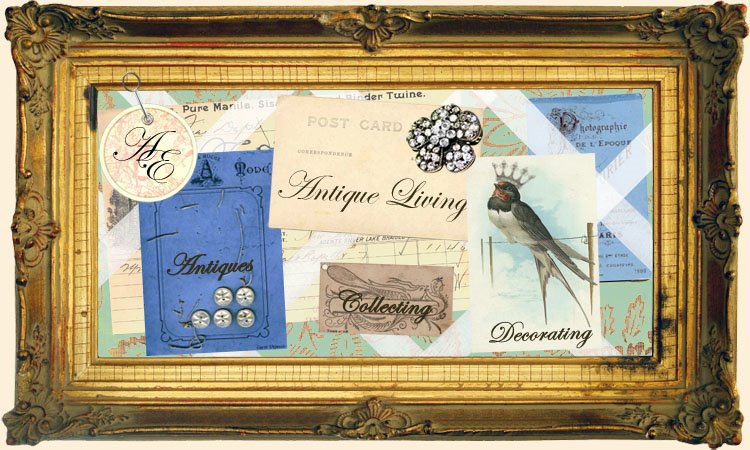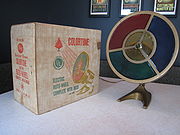Here are some of my favorite finds from Christmas Past at the Elk Rapids Antique Warehouse.
A milkglass Tom & Jerry punch bowl set.
Tom and Jerry Recipe
1 cup Dark Rum
1 Bottle (750 ml) Brandy
6 Eggs*
2 cups Sugar
4 cups Hot water, milk, or coffee
Separate eggs in two bowls. Add Rum & Brandy to the yolks and beat together until frothy. In the other bowl beat the egg whites until it peaks then add sugar and beat until stiff. Fold into the liquor mixture. Pour into mugs and top with the water, milk or coffee.
* Please use caution using raw eggs. Always use the freshest eggs possible. If raw eggs are a concern, use an egg substitute product.
A vintage "Glorious Angel " tree topper by Glolite Corporation Chicago, IL.
and
Decorative Metal Fence for your Christmas Tree
Mfd. by Consolidated Sales & Products Chicago, IL.
A Vintage ceramic Christmas Tree. I love the color of this tree .
I'ts not the usual green and red.
A fantastic set of Blue Ridge Christmas Tree pattern Cups and Saucers.
Blue Ridge dinnerware was produced by Southern Potteries of Erwin, Tennessee, from the late 1930's until 1956 in twelve basic styles and two thousand different patterns, all of which were decorated under the glaze.
Annalee Mobilitee Dolls
What began as a hobby for a young girl named Barbara Annalee Davis, grew into a family business-the business of doll making. A young adult in the 1930's, Annalee created puppets and dolls, unaware that this hobby would become her life's calling. She sold her dolls though various craft outlets in New Hampshire and Massachusetts. From the beginning, her dolls were in set positions, with the clothes sewed onto the doll. These were dolls for display, each with a story to tell.
In 1941 Annalee married Charles "Chip" Thorndike, the son of a Boston physician. Chip had become a chicken farmer in Meredith. Chip and Annalee worked on the farm through the 1940s and 1950s, until poultry farming was no longer profitable in New Hampshire. Needing another way to make a living, Annalee returned to making dolls.
She started in the kitchen of her Meredith farmhouse, helped by local women. Soon every corner of the house was taken over with doll parts. Thorndike not only employed several women in her home, she took work out to be completed in other women's homes. It was her husband Chip created clever wooden components for the dolls, including skis, ski poles, and little boats and it was also Chip who designed the wire frame that held the dolls in position.
The doll business was incorporated in 1955 as Annalee Mobilitee Dolls and the company continued to grow introducing new lines and innovative ideas.
A nice collected set of Vintage Shiny Brite Ornaments.
The Shiny-Brite company produced the most popular Christmas tree ornaments in the United States throughout the 1940's and '50s.
In 1937, Max Eckhardt established "Shiny-Brite" ornaments, working with the Corning Glass Company to mass produce glass Christmas ornaments. Eckhardt had been importing hand-blown glass balls from Germany since around 1907, but had the foresight to anticipate a disruption in his supply from the upcoming war. Corning adapted their process for making light bulbs to making clear glass ornaments, which were then shipped to Eckhardt's factories to be decorated by hand. The fact that Shiny-Brite ornaments were an American-made product was stressed as a selling point during World War II.
Dating of the ornaments is often facilitated by studying the hook. The first Shiny-Brite ornaments had the traditional metal cap and loop, with the hook attached to the loop, from which the ornament was hung from the tree.
Wartime production necessitated the replacement of the metal cap with a cardboard tab, from which the owner would use yarn or string to hang the ornament. These hangers firmly place the date of manufacture of the ornament to the early 1940's.
Following the war, Shiny-Brite introduced a line of ornaments with a newly designed metal hook that provided the user with two lengths of hanger. The long hook traveled through the center of the ornament and exited the bottom, where it attached to the foot of the ornament. This provided the "short" hanger. Unlatched from the bottom, the entire length of the hook was available, allowing the ornament to dangle at a greater distance from the tree limb to which it was attached. This arrangement was designed to allow the ornament to fill sparsely limbed areas of a natural tree.
The increasing popularity of the aluminum artificial Christmas tree, first manufactured in 1958, made this device far less attractive to the consumer, as an artificial tree had no gaps to be filled. The added expense of the lengthy hanging wire coupled with the diminishing need caused this feature to be discontinued in 1960.
The demand for glass ornaments waned as plastic ornaments became more popular, ultimately bringing the Shiny-Brite company to close its doors in 1962.
During its peak, Shiny-Brite had four factories in New Jersey, located in the cities of Hoboken, Irvington, North Bergen, and West New York. The company's main office and showroom were located at 45 East 17th Street in New York City, NY.
Shiny-Brite's most popular ornaments have been reissued by Christopher Radko since 2001.
From Wikipedia, the free encyclopedia
A selection of aluminum Christmas light reflectors.
I have seen these used for all kinds of fun Christmas projects.
Here is a "new" never used Vera Christmas tablecloth. This holly leaf design is screen printed
on all belgian linen.
The designer behind the name was Vera Neumann, an artist turned textile designer. Vera began designing textiles in 1946 after she and her husband, George Neumann founded Printex along with partner Werner Hamm.
They used a small silk-screening machine to print designs onto linen, which Vera then made into placemats. Hamm then took the finished placemats to B. Altman, where he made the company's first sale. In the post- WWII period, army surplus silk which had been used for parachutes, became available at cheap prices. Printex started buying it, and soon they were in the scarf business, making the items in their Manhattan apartment, a loft on 57th Street, where Vera and George handled the entire operation.
The "vera" trademark was first used in 1947. In 1948, the business had out-grown the loft and was moved from Manhattan to Ossining, NY.
By the 1950s business had grown to the point where Vera employed a team of designers. These designers were responsible for taking the original design which was done by Vera herself in the form of a 36" scarf, and translating it into other products.
In the 1960s a clothing line was added to the scarves and household linens. Blouses and dresses were made from the Vera textile designs.
In 1974, Perry Ellis went to work for Vera as a merchandise manager. He asked if he could submit designs for the clothing lines, and Vera encouraged him to do so. She liked his work, and he became a designer for Vera. In 1976 he was given his own division, Portfolio by Perry Ellis for Vera, which he designed for three years before starting his own company.




































